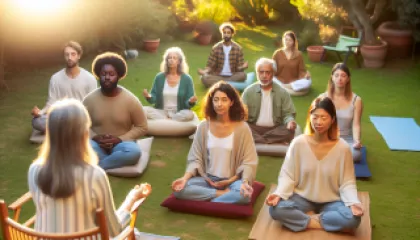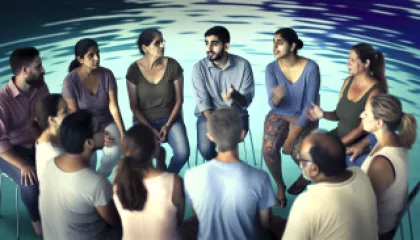5 Lessons from 'Tidying Up with Marie Kondo' to Transform Your Clutter
5 Lessons from 'Tidying Up with Marie Kondo' to Transform Your Clutter
Clutter can have a profound impact on our emotional well-being, often creating feelings of overwhelm, anxiety, and a sense of being trapped. In her hit Netflix series "Tidying Up with Marie Kondo," the Japanese organizing consultant and author has inspired millions to declutter their homes and lives, revealing the profound emotional benefits that can come from letting go of the physical items that no longer serve us. By applying the lessons from Kondo's KonMari method, we can not only transform the state of our living spaces but also unlock the path to greater emotional well-being and fulfillment.
Lesson 1: Surround Yourself with Items that Spark Joy
At the core of Kondo's approach is the principle of only keeping possessions that "spark joy" within you. This simple yet powerful idea encourages us to be more mindful and intentional about the physical objects we choose to surround ourselves with. When we let go of the things that no longer bring us happiness or serve a meaningful purpose, we create space – both physical and mental – for the items and experiences that truly nourish our souls.
As we sort through our belongings, Kondo reminds us to pause and consider how each item makes us feel. "Does this spark joy?" she asks, inviting us to tune into our emotional responses and use that as a guide for what to keep and what to let go. By focusing on joy rather than utility or obligation, we shift our mindset from one of scarcity and burden to one of abundance and gratitude.
This practice of surrounding ourselves with joy-sparking items can have a profound impact on our emotional well-being. When we are physically and visually immersed in the things we love, it can cultivate a sense of contentment, calm, and even inspiration. Letting go of the clutter that weighs us down can lift the heaviness from our minds and hearts, freeing us to focus on the people, activities, and experiences that truly nourish us.
Lesson 2: Cherish the Items that Remain
As we work through the decluttering process, Kondo emphasizes the importance of expressing gratitude and reverence for the possessions we choose to keep. This shift in mindset helps us move away from a consumer-driven, disposable mentality and instead cultivate a deeper appreciation for the items that remain.
When we handle each item with care, taking the time to acknowledge its purpose and the role it plays in our lives, we imbue it with a sense of meaning and significance. This practice can help us to let go of the guilt or attachment we may have felt towards the things we ultimately decide to part with, as we recognize that the true value lies not in the physical object itself, but in the memories, experiences, and emotions it represents.
By cherishing the items that remain, we can foster a greater sense of mindfulness and presence in our daily lives. We become more aware of the objects we use, the clothes we wear, and the books we read, recognizing the intrinsic value and beauty in each item. This shift in perspective can also encourage us to be more selective in our future purchasing decisions, as we strive to bring only those things into our lives that truly align with our values and bring us joy.
Lesson 3: Tidy by Category, Not Location
One of the key principles of the KonMari method is to tidy by category, rather than by location. Kondo encourages us to gather all of our belongings in a particular category – such as clothing, books, or documents – and then sort through them in one concentrated effort, rather than tackling a single room or area at a time.
This approach can be particularly beneficial for our emotional well-being, as it helps us to overcome the feeling of being overwhelmed by the sheer volume of clutter. When we focus on one category at a time, we can more easily identify the items that truly resonate with us and let go of the ones that no longer serve a purpose.
Moreover, this method can help us to uncover hidden connections between our possessions, revealing patterns and themes that may have been obscured when we were looking at individual rooms or spaces. By seeing the full scope of our belongings, we can gain a clearer understanding of our priorities, values, and emotional attachments, which can in turn inform our decisions about what to keep and what to let go.
Lesson 4: Express Gratitude and Say Goodbye
In the KonMari method, Kondo emphasizes the importance of expressing gratitude and bidding farewell to the items we choose to let go of. This practice can be a powerful tool for addressing the emotional attachments and feelings of guilt or regret that often accompany the decluttering process.
By acknowledging the role that each item has played in our lives, and expressing our appreciation for the value it has brought us, we can release the emotional burden and move forward with a greater sense of closure and peace. This simple act of gratitude can help us to let go of the past and embrace the present, recognizing that the things we once treasured have served their purpose and it is now time to make space for new experiences and opportunities.
Kondo also encourages us to say a heartfelt goodbye to the items we choose to part with, whether it's through a brief verbal acknowledgment or a more ceremonial gesture, such as donating the item to a worthy cause. This process can help us to emotionally disengage from the object and find closure, allowing us to move forward with a sense of lightness and freedom.
Lesson 5: Embrace the Journey, Not Just the Destination
The process of decluttering and organizing our lives can be a deeply transformative experience, but it is important to remember that it is a journey, not just a destination. Kondo reminds us that the true value of the KonMari method lies not just in the end result of a tidy, well-organized home, but in the personal growth and self-discovery that can unfold along the way.
As we embark on this journey, it is essential to approach it with patience, self-compassion, and a willingness to embrace the ups and downs. There may be moments of overwhelm, frustration, or even grief as we let go of possessions that hold sentimental value. But by acknowledging and honoring these emotions, we can move through them with greater clarity and ease.
Kondo encourages us to celebrate the small victories, whether it's the satisfaction of completing a category or the sense of lightness that comes from letting go of an item that no longer serves us. By savoring these moments and recognizing the progress we are making, we can cultivate a deeper sense of self-awareness, resilience, and emotional well-being.
Unlocking the Emotional Benefits of Decluttering
As we embrace the lessons of "Tidying Up with Marie Kondo," we unlock the profound emotional benefits that can come from decluttering our physical and mental spaces. By surrounding ourselves with items that spark joy, cherishing the possessions we choose to keep, and expressing gratitude for the things we let go, we can cultivate a greater sense of calm, contentment, and emotional well-being.
The process of decluttering is not just about organizing our homes – it is about reclaiming our power, reconnecting with our values, and creating the space to focus on the people, activities, and experiences that truly nourish our souls. By applying the principles of the KonMari method, we can embark on a transformative journey of self-discovery and personal growth, ultimately paving the way for a more fulfilling and emotionally resilient life.
Key Takeaways:
- Surrounding ourselves with items that spark joy can cultivate a sense of contentment, calm, and inspiration.
- Cherishing the items we choose to keep helps us foster a deeper appreciation and mindfulness in our daily lives.
- Tidying by category, rather than by location, can help us overcome feelings of being overwhelmed and gain a clearer understanding of our priorities and emotional attachments.
- Expressing gratitude and saying goodbye to the items we let go of can provide closure and release the emotional burden of clutter.
- Embracing the journey of decluttering, rather than just the destination, can lead to personal growth, self-discovery, and greater emotional well-being.
By applying the lessons from "Tidying Up with Marie Kondo," we can transform not only our physical spaces but also our emotional landscape. Decluttering can be a powerful catalyst for self-discovery, personal growth, and a deeper sense of fulfillment. As we let go of the things that no longer serve us, we create space for the people, experiences, and emotions that truly nourish our souls. Embrace the journey, celebrate the small victories, and unlock the profound emotional benefits of a clutter-free life.






